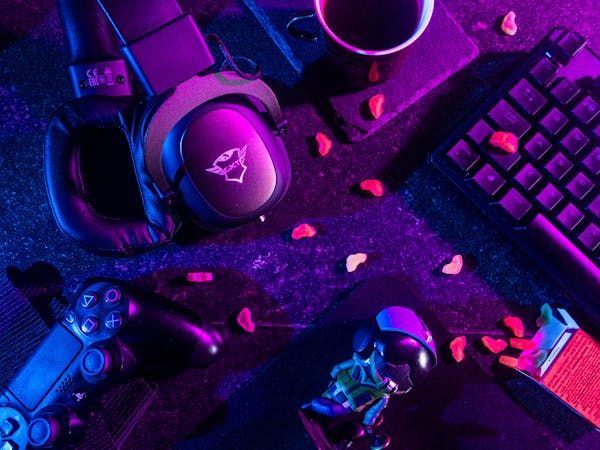Advertisement

- Updated on May 15, 2025
- IST 5:04 am
Tennis, like life, often throws curveballs. For Leander Paes, one such curveball came in 1996 at the Atlanta Olympics—a broken wrist. Yet, with the heart of a lion and the spirit of a true patriot, he played through the pain, securing a bronze medal that remains etched in India’s sporting history. This wasn’t just a medal; it was a testament to sacrifice, resilience, and the unyielding love for one’s country. For every Indian aged 15 to 45, Paes’ story isn’t just about tennis—it’s about the power of will, the fire of passion, and the pride of representing a billion dreams.
In this blog, we’ll dive deep into Paes’ heroic journey at the 1996 Olympics, exploring the emotional and physical battles he faced, the impact of his victory on Indian tennis, and why his legacy still inspires us in 2025. So, grab a cup of chai, settle in, and let’s relive the story of the wrist fracture that couldn’t stop India’s tennis hero.
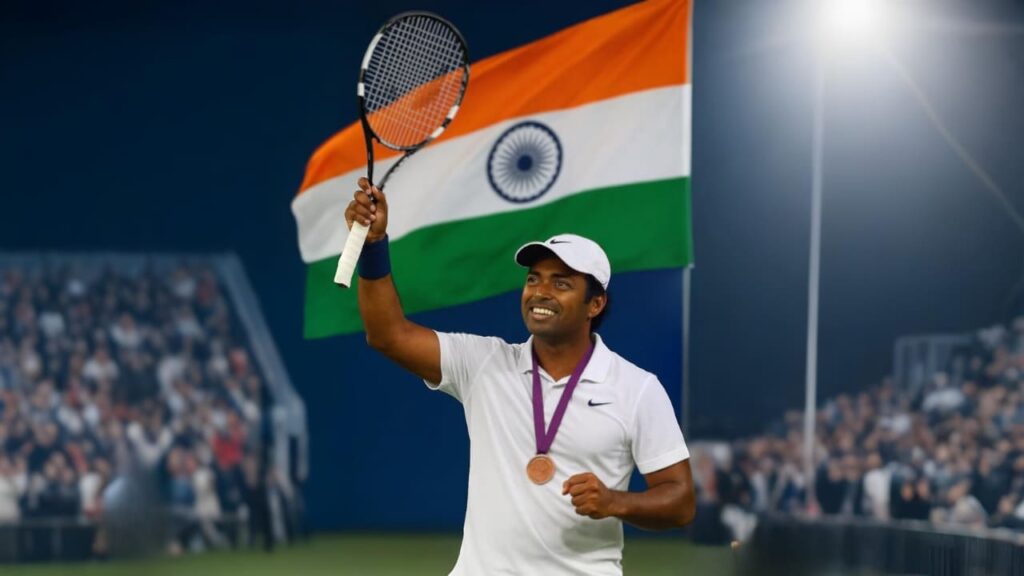
The Road to Atlanta: A Dream in the Making
Before the glory of 1996, there was a young boy from Kolkata with a racket and a dream. Leander Paes, born on June 17, 1973, was destined for greatness. His parents, both athletes, instilled in him the values of discipline and perseverance. His father, Vece Paes, was a member of India’s bronze-winning hockey team at the 1972 Munich Olympics, while his mother, Jennifer, captained the Indian basketball team. Sport was in his blood, and the Olympics were a family affair.
Paes’ tennis journey began at the Britannia Amritraj Tennis Academy in Chennai, where he honed his skills under the watchful eyes of legends like Vijay Amritraj. By 1990, he had won the Junior Wimbledon and Junior US Open titles, announcing his arrival on the global stage. But it was the Olympics that called to him—the ultimate test of an athlete’s mettle.
In 1992, at the Barcelona Olympics, Paes made his debut, reaching the quarterfinals in doubles with Ramesh Krishnan. Though they fell short of a medal, the experience fueled his hunger. He knew that Atlanta 1996 was his chance to make history.
The Atlanta Challenge: A Wrist in Peril
Fast forward to 1996. Paes, ranked 126th in the world, entered the Atlanta Olympics as a wildcard. The odds were stacked against him, but he had a secret weapon: preparation. He had spent months training at high-altitude venues to acclimate to the conditions at Stone Mountain Tennis Center, 500 meters above sea level. His dedication was unmatched, but fate had other plans.
In the semifinal against Andre Agassi, Paes pushed the American legend to the brink. The first set was a nail-biter, with Agassi edging it 7-6. But during the match, disaster struck—Paes ruptured tendons in his right wrist. The pain was excruciating, and the injury threatened not just his Olympic dream but his entire career. Yet, he soldiered on, losing the second set 6-3 but earning the respect of the tennis world.
With his wrist in a hard cast for 24 hours, Paes faced a monumental decision: withdraw or risk permanent damage. The doctors warned him, but his heart whispered, “Play for India.” And so, he did.

The Bronze Medal Match: Grit Over Pain
August 3, 1996. The bronze medal match against Brazil’s Fernando Meligeni. Paes’ wrist was still in agony, but his spirit was unbreakable. He lost the first set 3-6, and at 1-2, 30-40 in the second, he was on the brink of defeat. Then, something magical happened—he entered “the zone.”
Paes later recalled, “I don’t remember much of that match. I was in a trance.” He rallied, winning the second set 6-2 and the third 6-4, securing the bronze medal. As Meligeni’s final shot sailed long, Paes raised his arms, not just in victory but in defiance of pain. Tears streamed down his face—a mix of joy, relief, and sheer exhaustion.
This wasn’t just a win; it was a miracle. Paes had played through a career-threatening injury, risking it all for his country. His bronze was India’s first individual Olympic medal in 44 years, since wrestler KD Jadhav’s feat in 1952. For a nation starved of sporting success, it was a beacon of hope.

The Emotional Toll: A Son’s Tribute
Behind the triumph lay a deeper story. Paes’ father, Vece, had been his guiding light. A doctor and an Olympian, Vece understood the sacrifice. When Leander called him before the match, Vece said, “Son, play your heart out, but don’t jeopardize your future.” Leander’s response? “Dad, this is for India. I have to do it.”
The emotional weight was immense. Paes later dedicated the medal to his father, saying, “He taught me what it means to wear the tricolor.” In a poignant moment, the two bronze medals—Vece’s from 1972 and Leander’s from 1996—now sit side by side in the Paes household, a testament to a family’s legacy of service and sacrifice.

Impact on Indian Tennis: A New Dawn
Paes’ bronze wasn’t just a personal victory; it was a catalyst for Indian tennis. His success inspired a generation of players, from Mahesh Bhupathi to Sania Mirza, to dream big. Suddenly, tennis wasn’t just a sport for the elite; it was a path to global glory.
In the years that followed, Paes became a doubles legend, winning 18 Grand Slam titles and cementing his status as one of the greatest of all time. But it all began with that gritty performance in Atlanta. His medal showed India that with passion and perseverance, anything is possible.
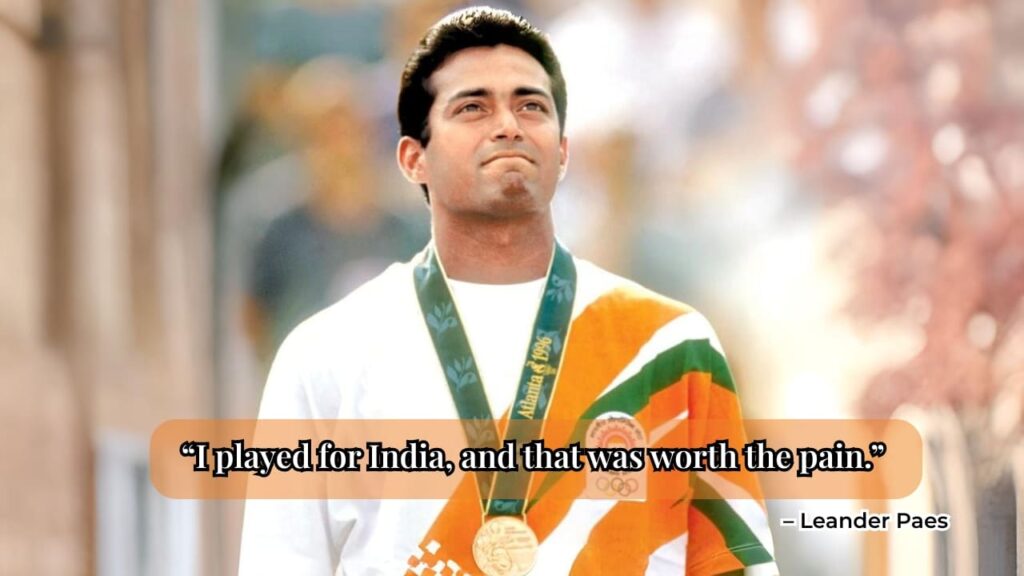
The Legacy Lives On: Lessons for Today
In 2025, as we look back, Paes’ story remains as relevant as ever. For the 15-year-old dreaming of sporting glory or the 45-year-old battling life’s challenges, his journey is a reminder: obstacles are inevitable, but surrender is optional.
Paes’ wrist may have been broken, but his spirit was unbreakable. He showed us that true heroes don’t just win; they inspire. And in doing so, he etched his name not just in tennis history, but in the hearts of a billion Indians.
Conclusion: Who’s Next?
Leander Paes’ 1996 Olympics bronze is more than a medal; it’s a symbol of sacrifice, resilience, and national pride. As we gear up for the 2026 Olympics, who will be India’s next tennis hero? Will it be a young prodigy from Kolkata or a seasoned veteran from Chennai? Only time will tell. But one thing’s for sure: Paes’ legacy will continue to inspire. What’s your favorite Paes memory? Drop it in the comments and let’s celebrate the man who played with a broken wrist for India.
You May Like This
Advertisement
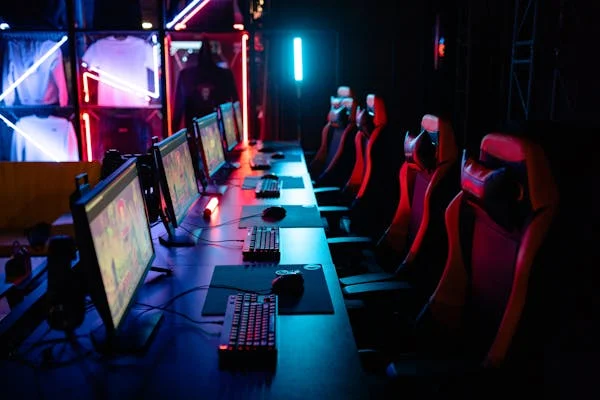
You May Like This



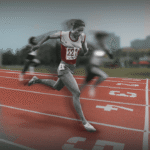




Advertisement
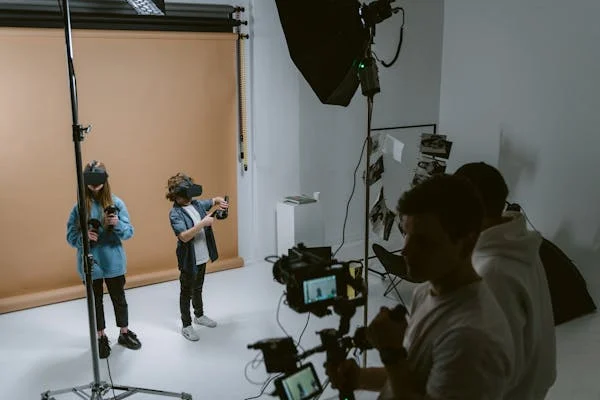
Advertisement

Advertisement
